With eyes set on a future green economy, technological innovation is paving the way for a sustainable transition without deep sea minerals or its associated risks. We’ve put together a three-part blog series, highlighting these advancements across various industries.
Moving toward a Circular Economy
EV, battery, and electronics manufacturers; governments; and other organizations are working toward – and incentivizing others to embrace – a circular economy. A circular economy, or an economy based on restorative or regenerative processes, enables resources to maintain their highest value as long as possible and aims for the elimination of waste.
A recent report indicates just 8.6% of the world’s materials are part of a circular economy.
Global attention on current methods of unsustainable resource extraction highlights the need to increase this percentage and reap the benefits of a circular economy. The revenue potential for an EV circular economy is estimated to reach $10 billion in 2030. The World Economics Forum anticipates the consumer electronics market to reach $1.7 trillion by 2024, but highlights that studies show only 20% of electronic waste is recycled. A circular economy for electronics would increase that percentage, and with a case study analysis of smartphones, recycling materials from smartphones alone is expected to generate a value of $11.5 billion.
Infrastructure for the EV and electronics circular economies have seen attention and improvement in the past few years.
Tesla Co-founder JB Straubel’s Redwood Materials company will spend $3.5 billion to build a new EV battery recycling and materials plant in Nevada. The plant aims to use recycled nickel, cobalt, and manganese to create battery parts, specifically anodes and cathodes. Solvay, a chemical company, and Veolia, a utilities business, joined forces to develop a circular economy consortium for LFP battery metals. This consortium aims to aid in the development of a recycling value chain.
Recent research also indicates that by 2050, 45–52% of cobalt, 22–27% of lithium, and 40–46% of nickel could be supplied from recycled materials. Recycling and reusing materials from vehicles and batteries will reduce global dependence on newly mined materials and terrestrial mines. Clarios has indicated that battery recycling should be considered as part of the design and development of a battery, encouraging producers to take on an end-of-life product responsibility.
Electronics companies are also moving toward circularity and are similarly considering the end of life for products.
In 2017, Apple set goals to achieve a 100% circular economy and has expanded its goal for Apple products to be carbon neutral by 2030. The company is working to incorporate end-of-life considerations into product development and source only recyclable and renewable materials. Apple’s Trade In program allowed the reuse of 12.2 million devices and accessories by new owners, and Apple’s state-of-the-art disassembly robot is able to sort and remove discrete components of Apple devices for reuse and recycling. Apple, Google, and Samsung are also working to cut down on electronic waste by offering consumers home self repair kits.
These companies are supported by new policies and frameworks aimed toward building the circular economy.
The U.S. government is working to boost domestic EV production with a $3 billion investment, and has announced a $60 million battery recycling program. The newly passed U.S. Inflation Reduction Act of 2022 includes incentives for recycled material use.
The European Commission also released a Circular Economy Action Plan in 2020, calling for less waste and more value with a new regulatory framework for batteries. Created by the European Commission, the European Battery Alliance is a collaboration of more than 750 European and non-European stakeholders along the battery value chain. The circular economy, and battery innovation, both indicate that DSM is not needed to reach a green transition.






